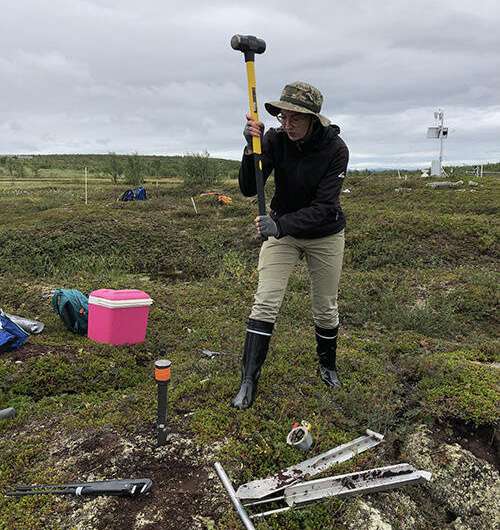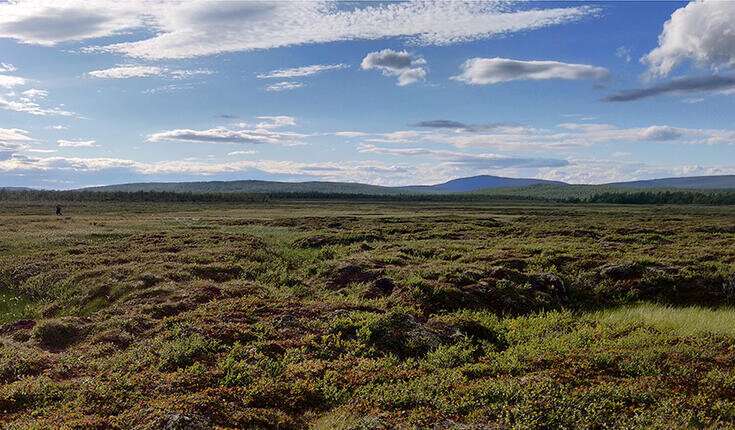Thawing permafrost releases organic compounds into the air

When permafrost thaws due to global warming, not only the greenhouse gases known to all, but also organic compounds are released from the soil. They may have a significant impact on climate change.
Arctic peatlands are very rich in carbon. The effects of the Arctic permafrost thawing on carbon dioxide and methane emissions have been investigated and assessed extensively globally. It is known that when the permafrost thaws, carbon dioxide and methane, which accelerate climate change, are released from the soil. Less attention has been paid to the fact that thawing permafrost may also release volatile organic compounds into the air.
Researchers at the University of Helsinki observed in a study for the first time that large quantities of volatile organic compounds, including monoterpenes, sesquiterpenes and diterpenes, are released from permafrost peatland soil thawed in laboratory incubations. The peatland soil samples were collected from Finnish Lapland. The study demonstrated that global warming accelerates the release of these compounds, particularly those with lower volatility, from the Arctic permafrost.
In the Arctic region, the anthropogenic influences are weak and aboveground vegetation is scarce. The released organic compounds from thawing permafrost can be highly reactive and contribute to the formation of small particles that suspend in the air. These processes can significantly impact the complex causalities associated with climate change and, consequently, the Arctic climate as well as global warming as a whole.

Compounds released from the soil and formed in the air can, for example, increase cloud formation, making increased cloudiness reflect solar radiation away from the Earth, which curbs global warming.
"For now, it's impossible to say with certainty whether the release of organic compounds accelerates or decelerates climate change. They introduce in any case additional uncertainties to climate change modeling." says Associate Professor Federico Bianchi from the University of Helsinki's Institute for Atmospheric and Earth System Research (INAR).
According to Bianchi, much more research is needed to determine the significance of the findings now made. One of the biggest uncertainties in modeling climate change is precisely the effect aerosols have on global warming. Finnish researchers are at the global top in aerosol research.
Specialists of several fields at the University of Helsinki contributed to the study, which was published in the esteemed Environmental Research Letters journal.
More information: Haiyan Li et al, Overlooked organic vapor emissions from thawing Arctic permafrost, Environmental Research Letters (2020). DOI: 10.1088/1748-9326/abb62d
Journal information: Environmental Research Letters
Provided by University of Helsinki



















